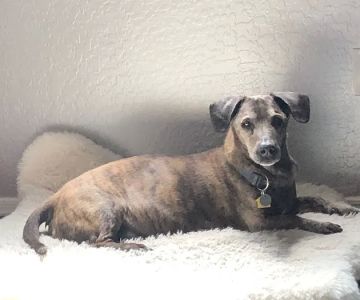How to Handle a Pet with Food Allergies
As a pet owner, discovering that your beloved companion has food allergies can be both overwhelming and confusing. It's not uncommon for pets, particularly dogs and cats, to develop sensitivities or allergies to certain ingredients in their food. In this article, I will walk you through the process of identifying and handling a pet with food allergies, ensuring that both you and your pet can lead a healthy and happy life.
1. Recognizing the Signs of Food Allergies in Pets
Before diving into the specifics of how to manage food allergies, it's essential to understand how to recognize the symptoms. Food allergies in pets often present themselves with a range of uncomfortable symptoms that can affect their overall health and well-being. Common signs include:
- Chronic itching and scratching
- Red, inflamed skin or rashes
- Ear infections
- Vomiting or diarrhea after meals
- Excessive gas or bloating
If you notice any of these symptoms, it’s crucial to consult your veterinarian as soon as possible for a proper diagnosis. Allergies can sometimes mimic other conditions, so a thorough examination is needed to determine the cause.
2. Common Food Allergens in Pets
While pets can be allergic to a variety of foods, there are some common culprits that tend to cause allergic reactions. The most frequent food allergens for pets include:
- Beef
- Chicken
- Dairy products
- Wheat or gluten
- Eggs
- Fish
Understanding what might trigger your pet’s allergy is a key step in managing their condition. Identifying the specific allergen through an elimination diet is often one of the most effective ways to pinpoint the issue.
3. The Elimination Diet: A Key Tool in Diagnosis
One of the most reliable methods for identifying food allergies is through an elimination diet. This process involves feeding your pet a special diet that excludes common allergens for a set period—usually about 8 to 12 weeks. During this time, you’ll closely monitor your pet for any improvements or worsening of their symptoms.
After the elimination period, your veterinarian may recommend reintroducing ingredients one by one to identify which specific food causes the allergic reaction. This process can be time-consuming but is one of the best ways to identify food allergies in pets.
4. Choosing the Right Food for Pets with Allergies
Once you’ve identified your pet's allergens, the next step is selecting the right food to manage their condition. Many pet food brands offer formulas specifically designed for pets with food sensitivities. Look for foods labeled as "hypoallergenic" or "limited ingredient" that exclude common allergens.
In addition to commercial food, some pet owners prefer to prepare homemade meals for their pets. If you choose this route, it's essential to consult with a veterinary nutritionist to ensure your pet’s meals are well-balanced and meet all of their dietary needs. Avoid feeding your pet human food or treats that could trigger an allergic reaction.
5. Monitoring Your Pet’s Health After Dietary Changes
After switching to a new food, it’s important to monitor your pet’s health closely. Keep an eye on their coat, skin, energy levels, and overall demeanor. If your pet’s symptoms begin to improve, this is a good sign that you’re on the right track. However, if the symptoms persist or worsen, it may be necessary to try another diet or consult with a specialist.
6. Managing Long-Term Food Allergies
Food allergies in pets are typically lifelong, but with proper management, they can live healthy and comfortable lives. Long-term management often involves sticking to the allergy-friendly diet and avoiding any known triggers. Regular check-ups with your veterinarian are crucial to ensure that your pet’s health remains on track and that any other potential allergens are not introduced into their diet.
In some cases, pets may require medication to manage their symptoms, such as antihistamines or corticosteroids. Your vet will provide guidance on whether this is necessary based on your pet’s specific condition.
7. The Importance of Veterinary Guidance
Handling food allergies in pets can be complex, and it’s always best to work closely with your veterinarian. They can help you navigate the process of identifying allergens, suggest the right food options, and monitor your pet's progress over time. If you're ever unsure about what to feed your pet or how to manage their allergies, a professional’s advice is invaluable.
8. Conclusion
Food allergies are a common yet manageable issue for pets, and by staying informed and proactive, you can help ensure that your pet lives a happy, healthy life. Whether you choose commercial hypoallergenic food or decide to prepare homemade meals, remember that consistency and veterinary guidance are key. If you suspect your pet may have food allergies, don’t hesitate to reach out to your veterinarian for help.











